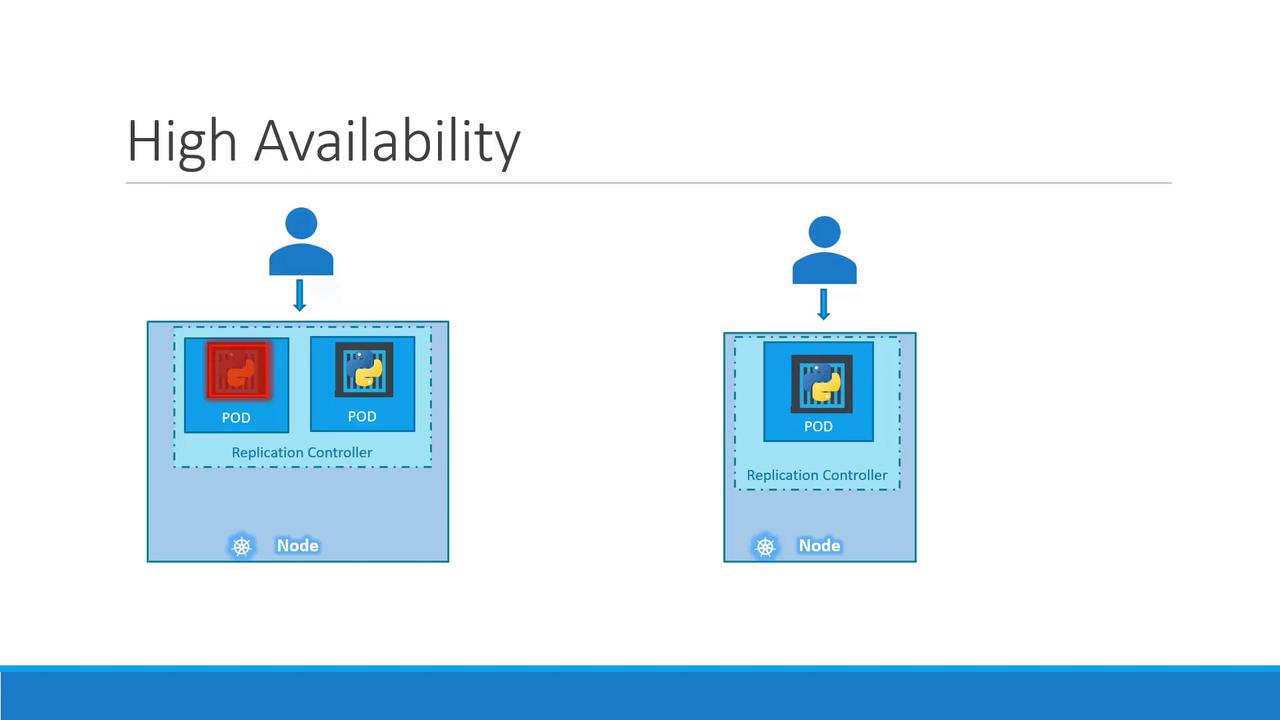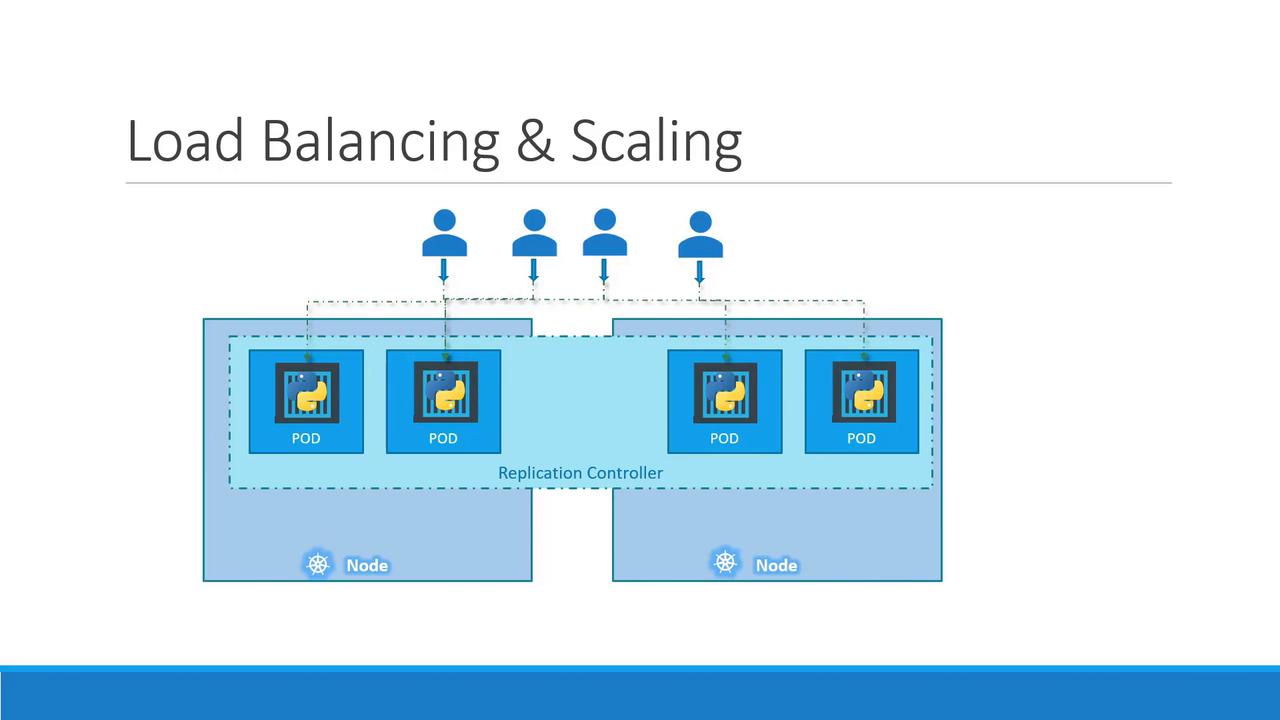Docker Certified Associate Exam Course
Kubernetes
Replication Controllers and ReplicaSets
Kubernetes controllers act as the control plane’s “brain,” continuously observing cluster objects and reconciling the current state with your declared desired state. In this lesson, we’ll deep dive into two controllers that manage Pod replicas: ReplicationController and ReplicaSet.
Why Use Replication Controllers?
Running a single Pod is risky—if it crashes, your application goes offline. A ReplicationController (RC) maintains a specified number of identical Pods, ensuring high availability and load distribution.
High availability: If one Pod fails, others continue serving traffic.

Redundancy and load balancing across nodes:

Scaling across nodes to meet growing demand:

ReplicationController vs. ReplicaSet
While both controllers maintain a set of Pod replicas, ReplicaSet (RS) is the modern API (apps/v1) and supports set-based label selectors. ReplicationController (v1) is older and has fewer selector capabilities. We recommend using ReplicaSets for new deployments.
| Feature | ReplicationController (v1) | ReplicaSet (apps/v1) |
|---|---|---|
| API Version | v1 | apps/v1 |
| Selector Support | Equality-based labels only | Equality & set-based label match |
| Recommended for Usage | Deprecated | Yes |
Creating a ReplicationController
Define
rc-definition.yaml:apiVersion: v1 kind: ReplicationController metadata: name: myapp-rc labels: app: myapp tier: front-end spec: replicas: 3 template: metadata: name: myapp-pod labels: app: myapp tier: front-end spec: containers: - name: nginx-container image: nginxApply the manifest and verify:
kubectl create -f rc-definition.yaml kubectl get replicationcontrollerExample output:
NAME DESIRED CURRENT READY AGE myapp-rc 3 3 3 19sList Pods managed by the RC:
kubectl get podsNAME READY STATUS RESTARTS AGE myapp-rc-4lvk9 1/1 Running 0 20s myapp-rc-mc2mf 1/1 Running 0 20s myapp-rc-px9pz 1/1 Running 0 20s
Introducing ReplicaSets
A ReplicaSet manifest closely mirrors an RC, with two key differences:
- apiVersion:
apps/v1 - selector: Required to match Pods
apiVersion: apps/v1
kind: ReplicaSet
metadata:
name: myapp-replicaset
labels:
app: myapp
tier: front-end
spec:
replicas: 3
selector:
matchLabels:
app: myapp
tier: front-end
template:
metadata:
name: myapp-pod
labels:
app: myapp
tier: front-end
spec:
containers:
- name: nginx-container
image: nginx
Apply and verify:
kubectl create -f replicaset-definition.yaml
kubectl get replicaset
kubectl get pods
Labels and Selectors
Labels are key/value pairs attached to objects. A ReplicaSet’s spec.selector.matchLabels determines which Pods it manages—even pre-existing ones.
Example Pod with labels:
metadata:
name: myapp-pod
labels:
tier: front-end
Matching selector in a ReplicaSet:
selector:
matchLabels:
tier: front-end
Scaling a ReplicaSet
You can adjust replica counts by editing the YAML or using kubectl scale:
Option 1: Update replicas in replicaset-definition.yaml and apply:
kubectl replace -f replicaset-definition.yaml
Option 2: Scale on the fly:
kubectl scale --replicas=6 -f replicaset-definition.yaml
Note
Using kubectl scale updates in-memory replica counts but does not modify your source YAML file.
For automatic scaling based on metrics, see the Horizontal Pod Autoscaler.
Command Cheat Sheet
| Command | Description |
|---|---|
kubectl create -f <file> | Create any Kubernetes object |
kubectl get <resource> | List resources (e.g., pods, rs) |
kubectl delete <resource> <name> | Delete a resource by name |
kubectl replace -f <file> | Update by replacing the manifest |
kubectl scale --replicas=<n> -f <file> | Scale replicas from the command line |
Links and References
Watch Video
Watch video content